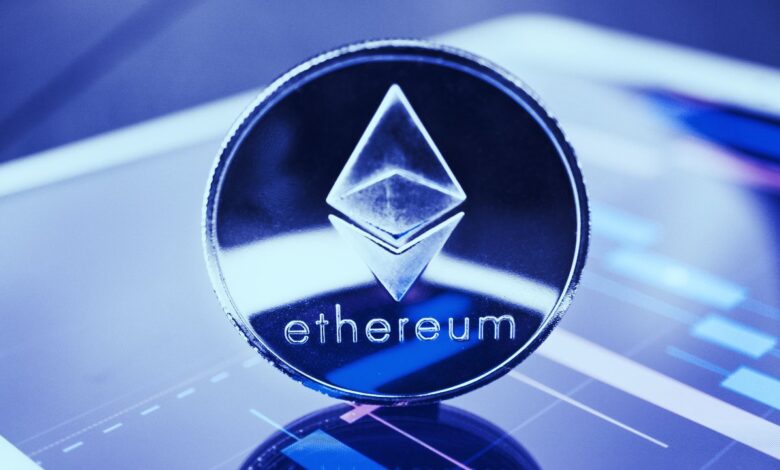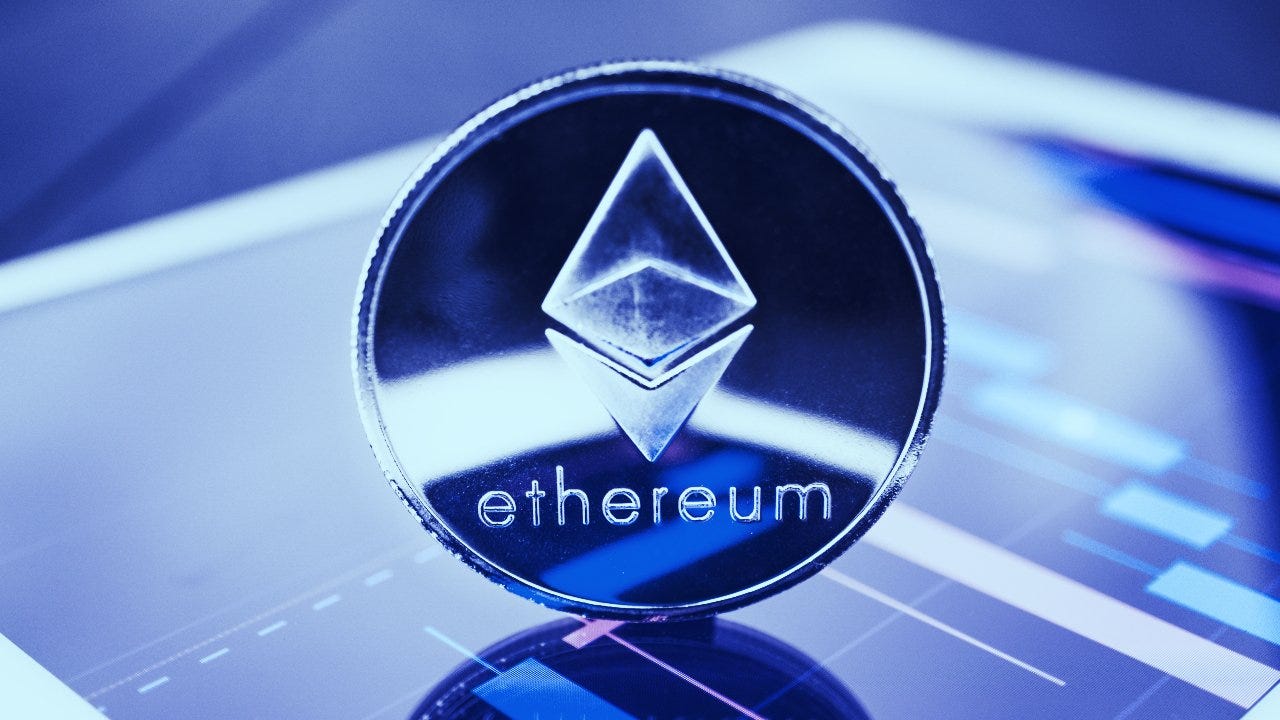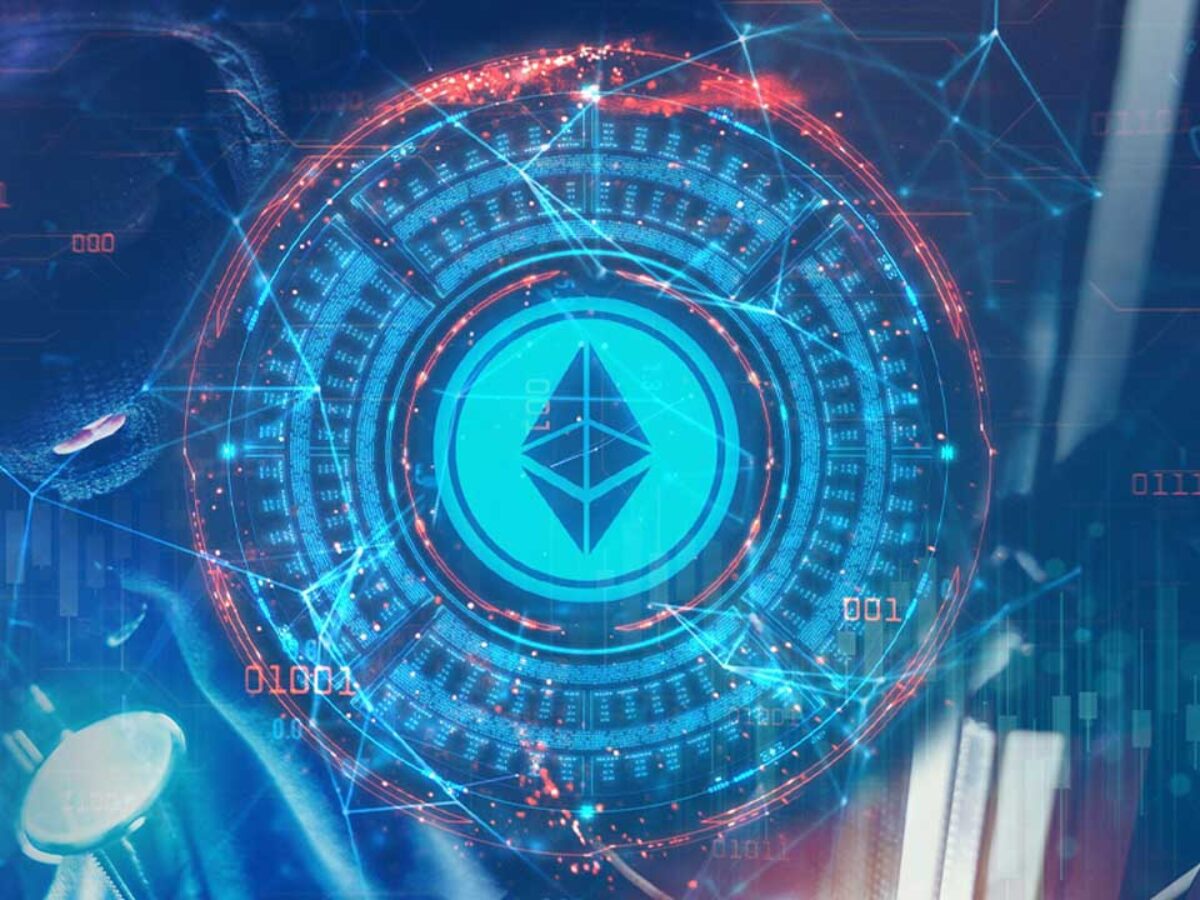Describe Ethereum’s features and applications.

The only cryptocurrency now ahead of Ethereum in terms of popularity is Bitcoin. The Enterprise Ethereum Alliance (EEA) was founded by some well-known companies, including Microsoft, Intel, and JPMorgan Chase, according to The Motley Fool. It is now necessary to learn about the Ethereum platform, its features, applications, and how it differs from Bitcoin.
Explain Ethereum. Decentralized apps, or those that are not under the jurisdiction of one single entity, can be developed and deployed using Ethereum, a blockchain-based computing platform. You can design a decentralized application where the decision-making authority resides with the program’s users. “Ethereum features” is the name of Ethereum’s cryptocurrency.
The Ethereum Virtual Machine:
Ethereum offers you access to the underlying technology as well as the architecture and applications necessary to interact with smart contracts. Decentralized applications, or DAPPs, are a kind of decentralized application, sometimes referred to as a DAPP App.
Decentralized apps, or consolidated apps, are made possible by Ethereum. To advance democratic decision-making, Using Ethereum, it is possible to build decentralized autonomous organizations (DAOs). ETH is the name of the cryptocurrency that Ethereum uses. It provides energy for the network.
It is used to cover the transaction fees and computational costs associated with every transaction carried out on the Ethereum network. Ether is a peer-to-peer currency, similar to Bitcoin. Decentralized apps, smart contracts, and routine peer-to-peer payments may all be created with EOS. Ether Smart Contracts You should use the guide to learn more about smart contracts because that is how conventional contracts operate.
A smart contract is a straightforward computer program that makes it easier for two parties to trade any asset. You may desire to swap money, stocks, real estate, or any other kind of digital asset. Any user on the Ethereum network can create these contracts. The bulk of the contract consists of the terms and conditions to which the parties have mutually agreed.
The main characteristic of a smart contract is that, once it has been executed, it cannot be changed, and every transaction carried out on top of it is irreversibly recorded. Therefore, the transactions associated with the original contract will not change if the smart contract changes in the future; you cannot adjust those transactions. When a transaction is completed, both the sender and the receiver’s accounts are accurately updated, which fosters trust between the parties.
Smart Contracts vs. Traditional Contract Systems
In traditional contract systems, you sign an agreement, and then you employ a third party to carry it out because you have faith in them. The issue is that data manipulation is feasible in this kind of operation. The contract is written in code when using smart contracts. The outcome is validated by the users of the Ethereum blockchain-based network rather than a centralized authority.
Because the transaction is recorded and cannot be altered after a contract data manipulation or tampering considers the following scenario: Zack paid Elsa $500 to develop the website for his firm.
The smart contract agreement is built by developers using the Ethereum programming language. All of the prerequisites (conditions) for developing the website are present in the smart contract. The written code was uploaded and deployed on the Ethereum Virtual Machine, which paid her $500 for the job. The smart contract agreement is built by developers using the Ethereum programming language.
All of the prerequisites (conditions) for developing the website are present in the smart contract. The written code is uploaded and deployed on the Ethereum Virtual Machine (EVM) after completion. A smart contract may be executed using an EVM, a runtime compiler.
Each node on the Ethereum network will assess and validate whether Elsa’s work has been completed following the coding criteria when she submits it to the Ethereum network for evaluation. The Ethereum Virtual Machine has to serve as a runtime environment for putting together and executing smart contracts that are based on Ethereum. The smart contract language, which is written in the Solidity programming language for Ethereum, is understood by the EVM.
In essence, you may install your stand-alone environment, which can serve as a testing and development environment, as EVM is run in a sandbox environment. Once you are pleased with the smart contract’s performance and usefulness, you may deploy it on the Ethereum main network after testing it. Any coding language used in the smart contract is translated into byte code that the EVM can comprehend.
The EVM can read and run this byte code. One of the most widely used languages for creating smart contracts is Solidity. As soon as your smart contract is created in Solidity, it is translated into byte code and deployed on the EVM, providing security against hacker assaults.
How Do EVMs Operate?
Take into account the scenario when person A wants to offer person B 10 ethers. The using the proof-of-work consensus algorithm, The Ethereum miner nodes will examine this transaction to verify that A is who he says he is and that he has the necessary funds to send. The transaction will be authenticated by miners, who will be paid a fee and get a reward.
The ether will be taken out of A’s wallet and transferred into B’s wallet after the transaction has been approved. Each node on the Ethereum network executes smart contracts using its EVM. Due to Proof of Work, every node in the Ethereum network has access to the whole history of every transaction and its associated transactions, as well as the history of every smart contract deployed on the network, as well as the handle to the smart contract’s current state.
Validating the blocks is the aim of the miners on the Ethereum network. Miners employ their computing power and resources to generate the correct hash value by altering the nonce for each
Block of a transaction.
According to the proof-of-work consensus, this generates a hash value that should be smaller than the predetermined objective.
The block is regarded as validated, and the miner if the resulting hashes value is less than the goal value. The solution to the proof of work is broadcast and shared with all the other nodes, who then update their ledgers. The block is uploaded to the Ethereum main blockchain and the miner is rewarded with a reward, which as of right now is three ethers if other nodes recognize the hashed block as genuine.
Additionally, the transaction fees that were produced for validating the block are given to the miner. The cumulative transaction fees connected with all the transactions that are included in the block are also given to the miner as compensation.
Evidence of Interest for Ethereum, a process called “proof of stake” is also in development. It replaces proof of work and is designed to utilize fewer of the expensive resources required for mining with proof of work. How many transactions a validator (miner) may validate in a proof of stake depends on how much Bitcoin they presently own before beginning the mining process. The miner has a better chance of mining the block if they already have more cryptocurrency in their hands. Evidence of stake is now less common than evidence of effort.
Decentralized Programs (Dapps).
Let’s contrast centralized and decentralized apps. For instance, an HTML-rendered web application is displayed when you log into Twitter. The website will retrieve your centrally stored data (your information).
A centralized database is accessed by your front end, which then contacts the backend API to obtain your data. Once you log in, the same online application is shown. If we make this application decentralized, the data is accessed from the blockchain network using a smart contract-based API.
As a result, the interface will operate as the smart contract’s API and the blockchain network will act as the smart contract’s back end. Instead of being a centralized database, the blockchain network is decentralized, and all transactions conducted using its smart contracts are confirmed (certified) by the network’s users (the miners).
Therefore, when it has been modified, any action or transaction made on a Twitter-like program will be a decentralized action or transaction. A DApp is made up of a backend code that executes on a distributed peer-to-peer network. The main distinction is that it enables direct communication between end users and the decentralized application providers since it is software created to operate on the Ethereum network without being governed by a centralized system, as was previously explained.
When an application employs a public blockchain-based token and is open-source (its source code is available on Github), it is considered a Dapp. A token is used as fuel for decentralized applications. The main design of any DApp allows for the decentralization of back-end data and code.
Decentralized Autonomous Organizations (DAOs) A DAO is a digital organization that functions in a decentralized, democratic manner without the use of hierarchical administration.
In summary, a DAO is an organization where decision-making is preferably delegated to certain authorized authorities or a group of designated individuals as a part of its authority rather than being centralized.
Voting systems
It resides on a blockchain network within the company and is a smart contract. Therefore, each organizational decision must first pass through the voting process, which is managed by a decentralized application, before being made. People contribute money through the DAO because it needs it to operate and make choices.
In the DAO, those tokens are used to cast votes, and the proposal’s status is determined by the number of votes received. This voting procedure must be used for every decision made inside the organization. Applications of Ethereum in the Real World Voting Procedures As we’ve seen with the DAO, voting systems are incorporating Ethereum. By preventing vote fraud, the results of polls are made known to the public, thus providing a fair and transparent political process.
Banking Methods
Financial institutions are fast embracing Ethereum due to its decentralized architecture and the difficulty it offers for hackers to get unauthorized access. Because Ethereum also allows transactions on an Ethereum-based network, banks are using it as a gateway for transporting money abroad and processing payments. Shipping: The use of Ethereum in transportation facilitates cargo tracking and guards against lost or fake products.
The provenance and tracking foundation needed for any asset in a normal supply chain is provided by Ethereum. Agreements may be implemented and maintained without change using Ethereum smart contracts. Ethereum may therefore be used as a system for creating smart contracts and for digitally storing the agreements and the transactions based on them in an industry that has dispersed participants, is prone to disputes, and needs the presence of digital contracts.
Ethereum vs. Bitcoin
Bitcoin and Ethereum compete regularly. The two cryptocurrencies have many similarities but differ significantly in a few key ways. By referring to Ethereum as “the world’s programmable blockchain,” the business portrays itself as an electronic, programmable network with many applications. There will never be more than 21 million bit coins in circulation.
Although the number of ETH that may be produced is limitless, the annual production of ETH is constrained by the time it takes to process a block of ETH. More than 120 million Ethereum coins are now in use. How each network handles transaction processing fees is a key distinction between Ethereum and Bitcoin. The people that participate in Ethereum transactions pay these costs, which are referred to as “gas” on the Ethereum network. The larger Bitcoin network pays the transaction costs associated with Bitcoin transactions./cloudfront-us-east-2.images.arcpublishing.com/reuters/TD4DBBD6RBNTXHZOZU7KBWS2QI.jpg)
Can Ethereum Be Exchanged for Money?
Yes. Investors that possess ETH have access to online exchanges like Coin base, Kraken, and Gemini for this transaction. All you have to do is register for an account on the exchange, connect a bank account, and move ETH from an Ethereum wallet to the account. Send an exchange a sell order for ETH. After being sold, transfer the profits in American dollars to the corresponding bank account.
edited and proofread by nikita sharma




